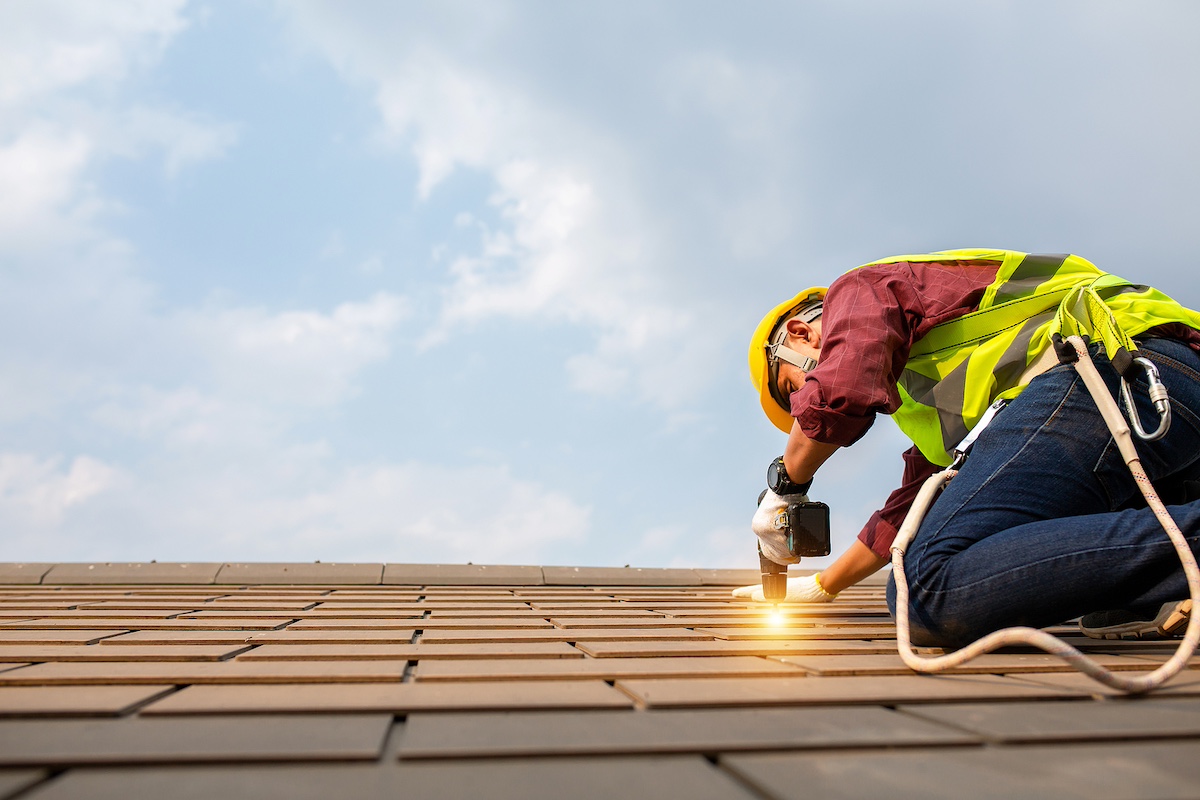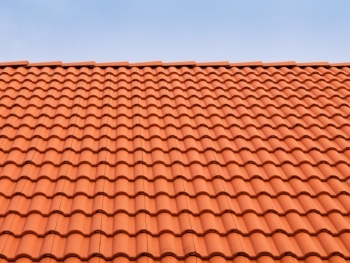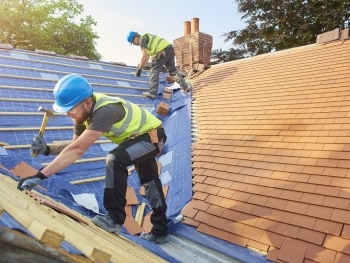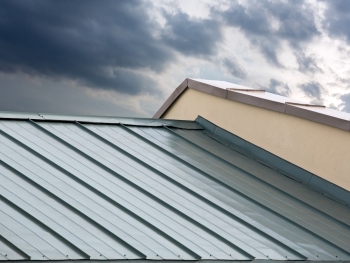Deciding whether to repair or replace your roof is a significant decision for any homeowner. It involves evaluating the current condition of your roof, understanding the costs, and considering the long-term implications. A well-informed choice can save you money and protect your home effectively. This comprehensive guide will walk you through the key factors to consider when deciding between roof repair and replacement, helping you make the best decision for your property.
Understanding Roof Repair vs. Replacement
Roof Repair: This involves fixing specific problems with your roof, such as replacing damaged shingles, sealing leaks, or repairing flashing. Repairs are typically less expensive and can extend the life of your roof for several more years.
Roof Replacement: This entails removing the old roofing material and installing a new roofing system. Replacement is generally recommended when your roof is severely damaged, aging, or if repairs would be too extensive to be cost-effective.
Factors to Consider When Deciding Between Repair and Replacement
- Age of the Roof
When to Repair:
- Relatively New Roof: If your roof is relatively young (less than 10 years old), and the damage is limited to a few areas, repair is often a viable option.
- Minor Issues: For isolated problems like a few missing shingles or minor leaks, repairs can be effective in extending the life of a relatively new roof.
When to Replace:
- Older Roof: If your roof is nearing or has exceeded its expected lifespan (usually 15-30 years, depending on the material), replacement may be more cost-effective in the long run.
- Widespread Damage: If multiple areas are experiencing problems, or if the roof is showing signs of age-related wear, replacement might be a better choice.
- Extent of Damage
When to Repair:
- Localized Damage: For damage that is confined to a small area, such as a few damaged shingles or a small leak, repairs can address the issue without the need for a full replacement.
- Non-Structural Issues: If the damage is cosmetic or minor, such as surface granule loss or minor flashing issues, repairs may be sufficient.
When to Replace:
- Widespread Issues: If damage is extensive and affects a significant portion of the roof, replacement may be necessary. This includes issues like widespread shingle loss, extensive leaks, or severe structural damage.
- Structural Damage: If the roof structure is compromised, such as sagging or significant rot, replacement is usually required to ensure the integrity of the roof and home.
- Cost Considerations
When to Repair:
- Cost-Effective Repairs: When the cost of repairs is significantly lower than the cost of replacement, and the repairs will extend the roof’s life for several years, repairing may be a more budget-friendly option.
- Immediate Budget Constraints: If you have immediate budget constraints, repairing can be a temporary solution while planning for a future replacement.
When to Replace:
- High Repair Costs: If the cost of repairs approaches or exceeds the cost of a new roof, replacement may be a more economical choice.
- Long-Term Savings: Investing in a new roof can provide better long-term value, reducing the need for frequent repairs and potentially lowering energy costs.
- Roof Leaks and Water Damage
When to Repair:
- Isolated Leaks: For small leaks or specific areas where water damage is limited, repairs can address the issue without needing a full replacement.
- Proper Identification: If leaks are confined to localized areas and the underlying structure is intact, targeted repairs can be effective.
When to Replace:
- Multiple Leaks: If there are numerous leaks or persistent water damage, it may indicate that the roof is beyond repair and replacement is necessary.
- Extensive Water Damage: If water damage has affected the underlying roof structure, such as decking or insulation, a full replacement may be required.
- Energy Efficiency and Modernization
When to Repair:
- Minor Efficiency Improvements: If your roof is relatively new and you only need to address minor efficiency issues, such as sealing gaps or adding insulation, repairs may suffice.
When to Replace:
- Energy Efficiency Upgrades: If your roof is old and outdated, replacement provides an opportunity to upgrade to more energy-efficient materials and technologies, such as reflective coatings or better insulation.
- Modern Materials: New roofing materials can offer improved performance and energy savings, making replacement a smart choice for modernizing your home.
- Aesthetic and Property Value Considerations
When to Repair:
- Cosmetic Issues: For cosmetic damage or minor aesthetic issues, repairs can enhance the appearance of your roof without the need for a full replacement.
When to Replace:
- Significant Wear and Tear: If your roof looks worn, faded, or has significant aesthetic issues, replacement can improve the curb appeal and overall value of your property.
- Increased Property Value: A new roof can enhance the resale value of your home and appeal to potential buyers, making it a worthwhile investment.
- Insurance and Warranty Considerations
When to Repair:
- Insurance Coverage: Check with your insurance provider to determine if the cost of repairs is covered. Minor repairs are often covered under standard homeowner’s insurance policies.
- Existing Warranties: If your roof is still under warranty, repairs might be covered, and maintaining the warranty can be beneficial for future issues.
When to Replace:
- Warranty Expiry: If your roof’s warranty has expired or does not cover the necessary repairs, replacement may offer a new warranty and peace of mind.
- Insurance Claims: If the damage is extensive and covered by insurance, a replacement may be a better option if it’s more cost-effective than multiple repairs.
Steps to Take Before Deciding
- Conduct a Thorough Inspection:
- Hire a professional roofing contractor to perform a detailed inspection of your roof. They can assess the extent of damage, identify underlying issues, and provide recommendations based on their findings.
- Get Multiple Estimates:
- Obtain estimates from several roofing contractors for both repair and replacement options. This will help you compare costs and make an informed decision.
- Consider Long-Term Implications:
- Evaluate the long-term costs and benefits of repair versus replacement. Consider factors such as energy efficiency, potential for future repairs, and the impact on property value.
- Consult with Experts:
- Speak with roofing professionals, contractors, and insurance agents to gather expert opinions and advice. They can provide valuable insights and help you weigh your options.
Deciding whether to repair or replace your roof involves careful consideration of several factors, including the age of the roof, extent of damage, cost implications, and long-term benefits. By conducting a thorough inspection, obtaining multiple estimates, and consulting with experts, you can make an informed decision that best suits your needs and budget. Whether you choose to repair or replace your roof, addressing issues promptly and effectively will help ensure the longevity and performance of your roofing system. For expert advice and professional services, contact Portland Roof Repair.
Our experienced team is here to guide you through the decision-making process and provide top-quality solutions for your roofing needs.





